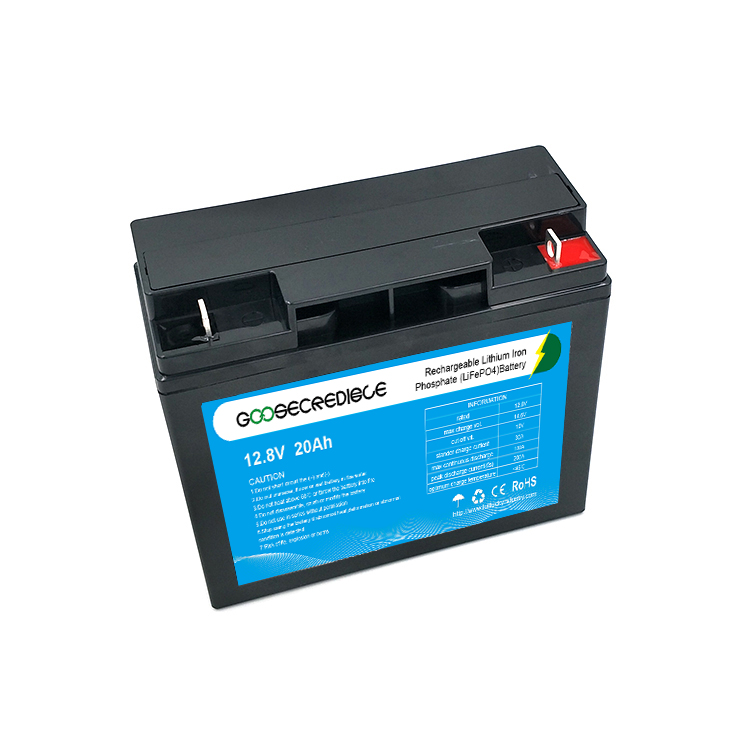Lithium battery: How does it work?
As an indispensable power source in modern electronic devices, lithium batteries are of great importance. However, in addition to their use in various high-tech products, the working principle and composition of lithium batteries themselves are also worth exploring in depth. This article will analyse this issue from four aspects: the basic working principle of lithium batteries, the core components, the charging and discharging process, and the safety performance.
1. What is the basic principle of lithium batteries?
Lithium batteries, also known as lithium-ion batteries, are based on the reversible movement of lithium ions between positive and negative electrodes. During the charging process, the electrical energy provided by the external power source causes lithium ions to be released from the positive electrode material, migrate through the electrolyte to the negative electrode and embed themselves in the negative electrode material. In the process, electrical energy is converted to chemical energy and stored. During discharge, lithium ions are released from the negative electrode and migrate back through the electrolyte to the positive electrode, releasing energy for external devices to use. This process achieves an efficient conversion between electrical and chemical energy.
2. What are the main components of lithium batteries?
Lithium batteries are mainly composed of positive electrode, negative electrode, electrolyte, diaphragm and casing. The positive electrode material is usually lithium cobalt oxide, lithium nickel manganese cobalt oxide or lithium iron phosphate, which have high energy density and good electrochemical properties. The negative electrode is usually a graphite or silicon-based composite that can reversibly incorporate and extract lithium ions. The electrolyte is the medium for lithium ion migration and is generally composed of organic solvents and lithium salts. The membrane is located between the positive and negative electrodes to prevent direct contact and short-circuiting, while allowing lithium ions to pass freely. The casing serves to encapsulate and protect the internal components.

3. How do lithium batteries charge and discharge?
The charging and discharging of lithium batteries is a complex electrochemical reaction process. During charging, the external power supply controls the current and voltage through the Battery Management System (BMS) to ensure safe and efficient conversion of electrical energy into chemical energy. Lithium ions are extracted from the positive electrode under the action of the electric field, pass through the electrolyte and diaphragm, and finally embed in the negative electrode. During discharge, the process is reversed, with lithium ions escaping from the negative electrode and returning to the positive electrode, releasing the stored energy. During this process, the BMS is also responsible for monitoring battery status to prevent abnormal conditions such as overcharging, over-discharging and short-circuiting.
4. How can the safety performance of lithium batteries be ensured?
The safety performance of lithium batteries is the key to their widespread use. To ensure safety, lithium batteries are designed with several protective measures. Firstly, the positive and negative electrode materials are selected with good thermal stability and non-flammable electrolytes to reduce the risk of thermal runaway. Secondly, the diaphragm has excellent ion conductivity and mechanical strength, which effectively prevents internal short circuits. In addition, the battery case is made of strong materials that can withstand certain external impacts and crushes. Most importantly, the battery management system (BMS) can monitor the battery’s voltage, current, temperature and other parameters in real time, and take immediate action when an abnormality is detected, such as cutting power or starting the heat dissipation mechanism, ensuring that the battery operates under safe and efficient conditions.
In summary, the working principle and composition of lithium batteries is a complex and sophisticated system involving knowledge from many fields such as electrochemistry, materials science and electronics. Through continuous optimisation of materials, structures and management systems, the safety performance and service life of lithium batteries have been significantly improved, providing a solid energy guarantee for the technological progress of modern society.
-
 As the world moves towards green and sustainable solutions, the motorcycle industry too is on the brink of a revolution. One of the mainstream dynamics it is altering pertains to two-wheel vehicle batteries. Increasingly, electric bike operations have been prioritized based on sustainability and reducing emissions-posing quite a challenge to bicycle manufacturers standing up with cutting-edge efficient solutions, and yet...Read more
As the world moves towards green and sustainable solutions, the motorcycle industry too is on the brink of a revolution. One of the mainstream dynamics it is altering pertains to two-wheel vehicle batteries. Increasingly, electric bike operations have been prioritized based on sustainability and reducing emissions-posing quite a challenge to bicycle manufacturers standing up with cutting-edge efficient solutions, and yet...Read more -
 Introduction: Communication plays a vital role in our daily lives. We rely heavily on our smartphones, tablets, and other devices to stay connected with our loved ones and to access information. Behind the scenes, communication base stations serve as the backbone of our connectivity, enabling seamless network coverage. Traditionally, these base stations have been powered by diesel generators, which...Read more
Introduction: Communication plays a vital role in our daily lives. We rely heavily on our smartphones, tablets, and other devices to stay connected with our loved ones and to access information. Behind the scenes, communication base stations serve as the backbone of our connectivity, enabling seamless network coverage. Traditionally, these base stations have been powered by diesel generators, which...Read more -
 As global attention to environmental protection and energy efficiency continues to deepen, the automotive industry is facing unprecedented challenges and opportunities. Against this background, large-capacity vehicle start-stop battery technology emerged as the times require, becoming a key technology for improving vehicle performance and achieving the dual goals of energy conservation and emission reduction. Start-stop technology, as an advanced energy-saving method,...Read more
As global attention to environmental protection and energy efficiency continues to deepen, the automotive industry is facing unprecedented challenges and opportunities. Against this background, large-capacity vehicle start-stop battery technology emerged as the times require, becoming a key technology for improving vehicle performance and achieving the dual goals of energy conservation and emission reduction. Start-stop technology, as an advanced energy-saving method,...Read more -
 Lithium Iron Phosphate (LiFePO4) batteries are becoming increasingly popular due to their high energy density, long cycle life, and improved safety compared to other lithium-ion batteries. In this article, we will take a closer look at LiFePO4 batteries, their characteristics, advantages, and usage. Chemical Composition LiFePO4 batteries are made up of three main components: a cathode, an anode,...Read more
Lithium Iron Phosphate (LiFePO4) batteries are becoming increasingly popular due to their high energy density, long cycle life, and improved safety compared to other lithium-ion batteries. In this article, we will take a closer look at LiFePO4 batteries, their characteristics, advantages, and usage. Chemical Composition LiFePO4 batteries are made up of three main components: a cathode, an anode,...Read more -
 Introduction Establishing good rail travel experiences for your customers requires much more than a safe road bed or an eye-catching and modern passenger car. There is much thought and expertise that contributes to giving people a comfortable and smooth journey, notwithstanding many miles over not-so perfect track. Here’s where modern locomotives come to play. Efficiency ranks high these...Read more
Introduction Establishing good rail travel experiences for your customers requires much more than a safe road bed or an eye-catching and modern passenger car. There is much thought and expertise that contributes to giving people a comfortable and smooth journey, notwithstanding many miles over not-so perfect track. Here’s where modern locomotives come to play. Efficiency ranks high these...Read more -
 Lithium iron phosphate (LiFePO4) batteries have been gaining popularity in recent years as a more efficient and environmentally friendly alternative to traditional lead-acid batteries. In this article, we will explore the benefits and applications of LiFePO4 battery cells. Benefits of LiFePO4 Battery Cells 1. High Energy Density: LiFePO4 batteries have a high energy density, which means that they...Read more
Lithium iron phosphate (LiFePO4) batteries have been gaining popularity in recent years as a more efficient and environmentally friendly alternative to traditional lead-acid batteries. In this article, we will explore the benefits and applications of LiFePO4 battery cells. Benefits of LiFePO4 Battery Cells 1. High Energy Density: LiFePO4 batteries have a high energy density, which means that they...Read more -
 If you are looking for a reliable and high-performance power solution for your off-grid or backup power needs, look no further than the 12V 100Ah LiFePO4 Lithium Iron Phosphate Battery. This battery is designed to provide you with a long-lasting and efficient power source that can keep you going for hours on end. The LiFePO4 lithium iron phosphate battery...Read more
If you are looking for a reliable and high-performance power solution for your off-grid or backup power needs, look no further than the 12V 100Ah LiFePO4 Lithium Iron Phosphate Battery. This battery is designed to provide you with a long-lasting and efficient power source that can keep you going for hours on end. The LiFePO4 lithium iron phosphate battery...Read more

